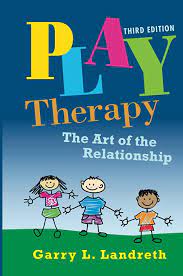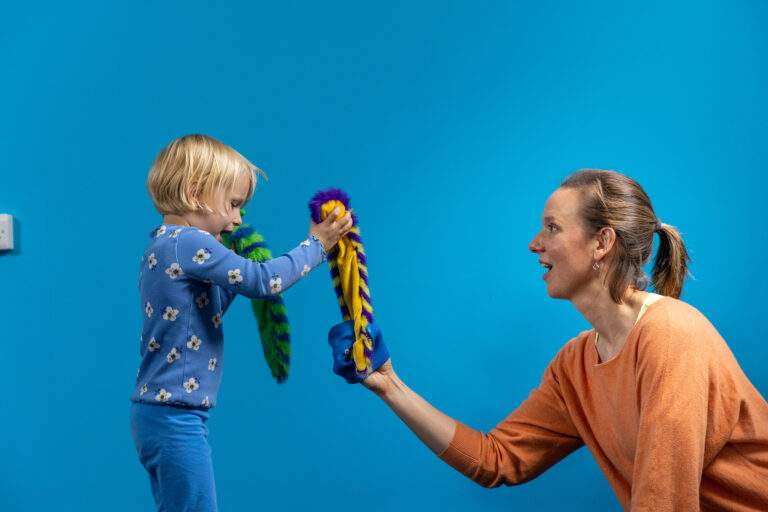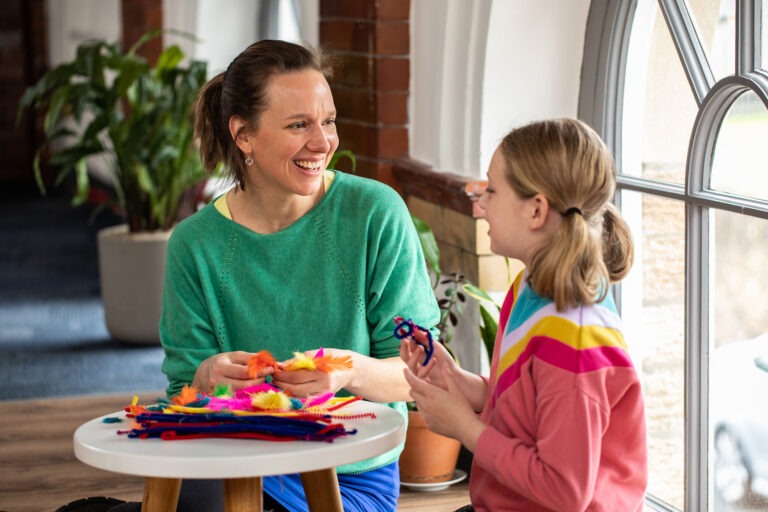The Play Therapy Toolkit consists of all the toys and things a child has access to in the Play Therapy room, and it includes me, the therapist. Indeed, I am the biggest tool in the box! Funny, but true. In the words of G. Landreth: “The relationship is the therapy”. (from The Art of the Relationship, 2012, p.82)
When a child enters the Play Therapy room for the first time they are usually quite excited to see such a wide variety of toys and things to explore. Some kids flutter around like a butterfly to get a taste of everything, and others see something they absolutely love and get stuck in for the rest of the session. It’s all fine with me; each child follows their own lead (this is child-led Play Therapy). But what exactly makes the toys, art modalities and sensory modalities useful, effective and perhaps even powerful? It’s what the child choses to do with it that determines its purpose. All these carefully selected things have unique qualities and properties. Whatever the child does, they project a part of themselves onto the toy or thing, and something emerges from their inner world that perhaps they’ve not been aware of before. Seeing their problem, issue or experience right in front of them (albeit unconsciously), and to explore it, change it, do something to it can be very empowering for a child.
Let’s take a look at the actual ‘things’ in the Play Therapy Toolkit.
Musical Instruments. These are instruments that are literally an instant hit: some basic percussion instruments, a xylophone, a miniature keyboard and a rainmaker. Making sounds, loudly or softly, can be very empowering for a child, especially if I mirror what the child is doing. By mirroring a child who is hitting a drum for example, I give her permission to express herself. Without words I copy what the child is doing, and this way I support her and convey to her ‘ I’m with you and you are the one in charge, you get to decide, go for it!’. To a child who needs to express herself through movement and sound, this can be very empowering.
Role Play Items. There’s a doctor’s set, babydoll with baby care items, chef’s hat and apron plus food items, wizard’s hat and cape, magic wand, mobile phone, butterfly wings, pirate’s hat and fantasy character mask. Plus there’s two foam tubes that can be whatever the child wants them to be: a sword, a gun, anything! Through role play a child can explore different parts of themselves, try out what it feels like to be strong and in charge, nurturing and caring, or perhaps a child wants to feel like a baby again. Anything is possible, with imagination the sky is the limit, and a child can turn themselves and me into whatever they want.
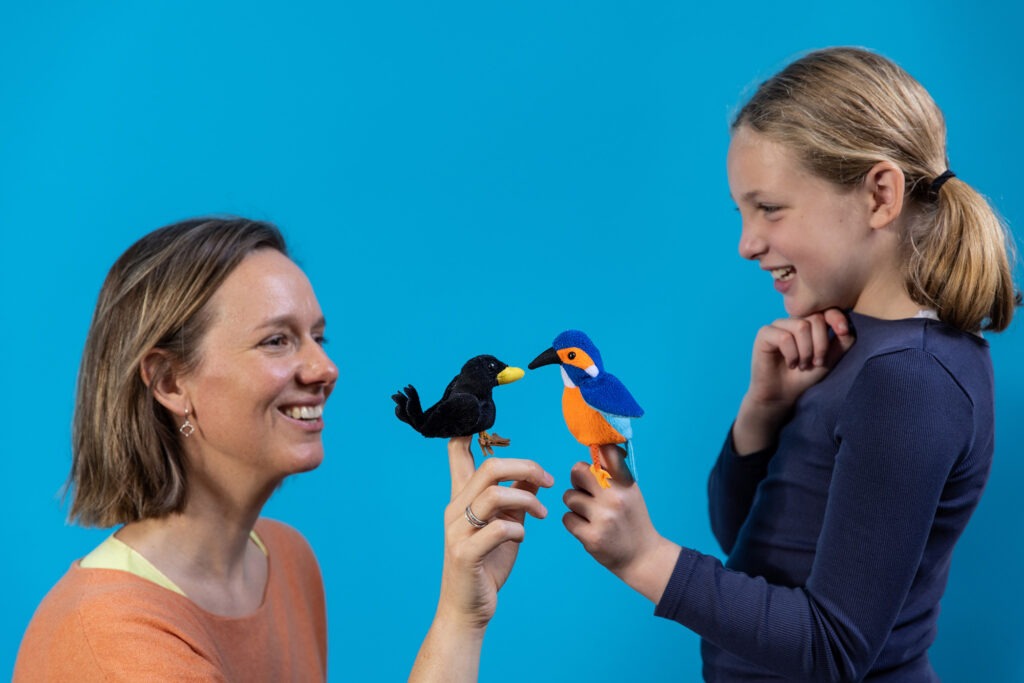
Hand Puppets. There are four large animal puppets in the Play Therapy Toolkit, smaller hand puppets such as two rubber sharks and two fluffy caterpillars, and various finger puppets (animals, small people and fantasy characters). What I’ve noticed is that puppets can be an instant expression of a child’s feelings: anger, sadness, seeking connection, feeling uncertain, curious, or bold. There’s always a second puppet that matches the child’s chosen puppet, which I will operate so the two can interact (unless the child tells me which puppets to use). I don’t decide on what my puppet says and does. I’ll whisper to the child something like ‘what does it do now?’ (it’s always clear to a child this is an ‘off-stage’ whisper!) and I’ll let my puppet act out what the child instructed me to do. Again, the child is in charge, and the play develops according to what the child wants to see, feel, understand and experience. Puppets can also easily turn into a fluffy friend, and a child might name a puppet and say hi and bye to it at the start and end of a session.
Art Materials. The art table gets a bit crammed as there’s a lot for each child to choose from: various types of paper from the whole colour spectrum and in various sizes (including a roll of paper to draw life-size body shapes or whatever the child wants to do); wax crayons; colouring pencils; felt tip pens; paint; glue sticks and runny glue; stickers; gem-like decorations; yarn; paint sticks; elastic bands; junk modelling items such as egg boxes; masking tape; colourful pipe cleaners; coloured feathers; buttons and googly eyes; coloured lollipop sticks and more. Each child also has their own empty shoe box (which they can decorate if they want to). Everything they make in the Play Therapy sessions will be kept in this box and I will keep it safe for them. On their last session the child can take the box and all their creations home with them, if they choose to do so.
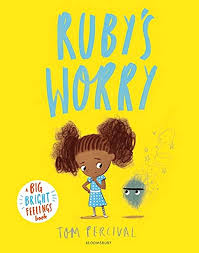
Books. A handful of books about feelings and emotional wellbeing are available. The books are for younger readers (age 4-5) but can be a good conversation starter for older children too.
Sensory Materials and Sensory Toys. There’s a few stretchy, squishy toys that most of us are familiar with these days. They keep their shape but are just nice to touch and handle, and can be good little stress busters. Another one we’re all familiar with and which I think fits into this category are bubbles. Blowing the bubbles, watching them float, popping them. It’s a simple activity that many children enjoy doing, and it can be a very soothing experience for a child who might be feeling anxious or stressed. Then there’s a few different Play Dough pots to choose from, but without the gadgets to make Play Dough pizza or ice cream with. What matters is the child’s direct contact between material and their hands, so they create what they have in mind. Finally, and this is a big one, there’s clay. Real sticky, earthy, mouldable clay. It has weight, it smells natural and earthy (because it is a natural product), and it can get very messy and gloopy (water is always available for the child to add to the clay). Clay can immerse a person in a very engrossing sensory experience (touch, smell, sight, sound), and clay has the potential to somehow absorb strong feelings and big experiences. And of course, a child can mould and shape the clay as they wish. These creations also go into the shoebox.
Sand. Sand is another medium that offers a multi-sensory, immersive, energy absorbing and creative experience to the child. There are two sand trays, one with dry sand, one with wet sand. Water can be added to the wet sand if the child wants to do so. Perhaps they want to mould and build with the sand, or turn it into a more watery and sensory experience. The dry sand is fluid in a different way, and the shapeshifting nature of dry sand means that whatever the child creates in the tray, it can be altered or changed with total ease.
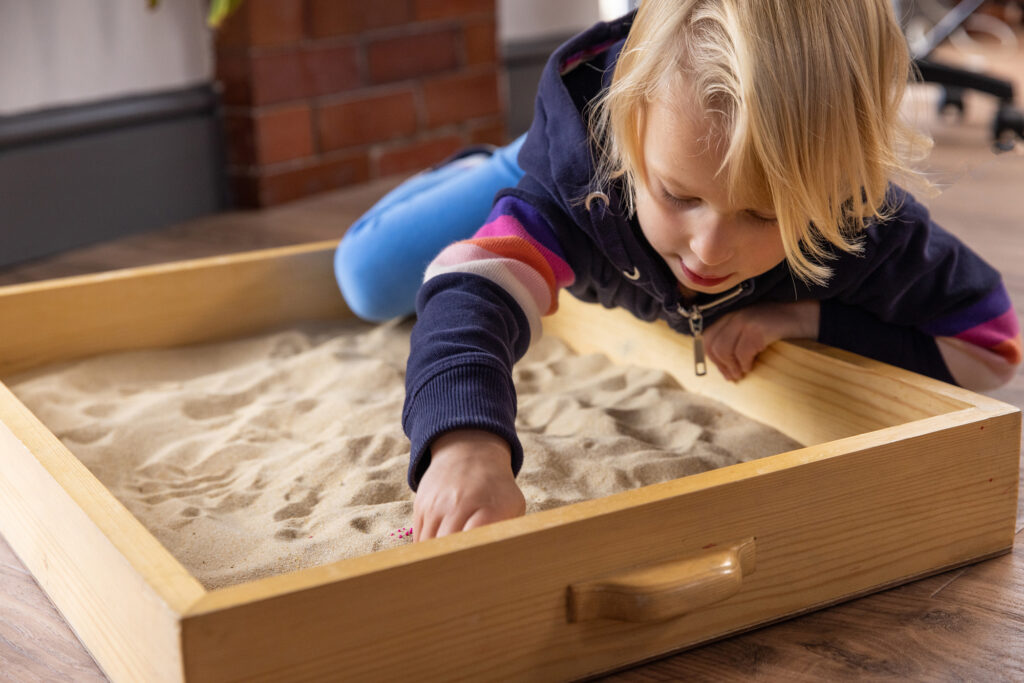
Working in a dry sandtray a child can quickly enter into a type of dreamstate, where things are experienced as if in a different reality. Here a child can create and play whatever they want. They think it, feel it, and their hands will make it visible in the soft sand. They can also use small figurines, shells, stones, feathers and symbols that are next to the sandtrays, or put other toys from the playroom into the tray. Therapeutic sandplay can be a very powerful and impactful experience for a person of any age. Sand play can offer much insight into in a person’s body (and where they hold possible trauma) and mind.
Toys. And then there are toys. Small toys that a child can form practically any world with that they want to see in front of them: Animals (including doubles and little ones to form families with), dinosaurs, a tub of Lego, a tub of Playmobil characters, a Playmobil house with small furniture items, things that go (vehicles, a plane, a helicopter, boats), buildling blocks and fences, trees etc. All these items can all go into the sandtrays too. The options for creation really are endless.
Games and cards. There are a few travel size games in the Play Therapy Toolkit: Ludo, Connect 4, a pack of playing cards and also a pack of emotional literacy cards (for understanding feelings). Plus two squishy balls. Playing a game might not seem to be a very therapeutic thing to do. Surely there’s no special skill involved? But for some children, especially a child who is new to Play Therapy, playing a familiar game might help them to handle their anxiety and give an opportunity to ‘just play’. As the therapist I am always aware how playing a game together is a great way to be in relationship with each other. Collaborative play has a strong relational aspect, and engaging with each other can help clients to feel what it’s like to be in tune with themselves (as well as with another person). Which brings me to the final Play Therapy Toolkit item.
The Therapist. It’s true, the Play Therapist is the biggest toy in the Play Therapy Toolkit. This statement perhaps trivialises the therapist’s role a bit, but what I mean is that the therapeutic relationship between child and therapist is what facilitates the change, growth and development within the child. Because I accept a child exactly as they are, the child will learn that they do not need to please me in any way, and they can just be who they are. Over time, the child will discover their own strengths, grow to be more responsible for themselves and respectful of themselves, and grow in awareness of their own feelings and experiences. Ultimately, a child who has been through a therapeutic process will emerge feeling more Empowered in their own unique way.
Playing to Be FREE, Playing to Be ME!
Extra’s. Extra’s that can be provided by me (if this will be of therapeutic value to the child) are Therapeutic Storytelling and Guided Visualisations. Both are specifically written and created for each individual child, and can be incredibly effective tools in supporting a child’s therapeutic process. There is a lot to say about all of these subjects, perhaps food for thought in another blogpost perhaps?
Thank you for reading!
Patricia
